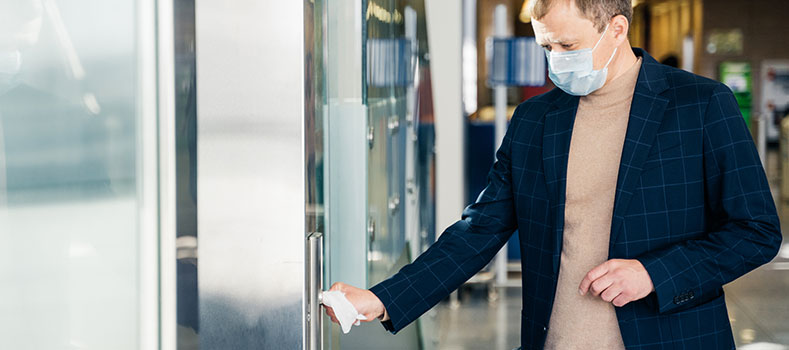when you spend $50

What we can all agree on when it comes to COVID-19
It’s tough to escape all the competing headlines about COVID-19 mitigation.
- How harmful is the virus…really?
- Is it possible to be infected more than once?
- Do masks really help?
- Are lockdowns hurting more than they’re helping?
- What about herd immunity?
- Is it safe or not to send kids to school or to attend a football game?
- Can I catch the virus by touching the same surface that an infected person did?
There are differing viewpoints and research on nearly every aspect of COVID-19. The challenge to answering these questions is that the virus is a recent phenomenon.
People may disagree on the threat of COVID-19…
When COVID-19 first surfaced, there wasn’t enough information about it to draw many conclusions. Scientists had to work as quickly as possible to answer fundamental, vital, and unprecedented questions. Unfortunately, they couldn’t get all of these answered before the virus spread across the globe.
Therefore, people had to take what they did know and make their own decisions on how to deal with the virus. Some erred on the side of caution. Others decided it wasn’t a big deal until they learned otherwise.
Since then, research has varied based on a number of factors, and data is still coming in. If you read or listen to every opinion out there, you would find there is still little consensus about the key questions surrounding COVID-19.
Furthermore, since it’s only infected less than 3 percent of the U.S. population, many people may not personally know a person who has contracted the virus. Without firsthand experience, people often dismiss the warnings from the scientific and medical communities about emerging threats.
…But nobody wants to get it
Here’s something we can all agree on: Nobody wants to contract this virus. Even if you’re asymptomatic, an infected person is a potential risk to others. And nobody wants to deal with the list of symptoms and long-term effects some have reported with COVID-19.
That means people should try as hard as they can to avoid infecting others or being infected. This attitude is no different than any other virus. While we may not be afraid of the flu, nobody is trying to catch it. The same goes for every contagion from the common cold to ebola.
At the least, people should be diligent about washing hands, staying home when sick, and staying far enough apart to avoid spraying droplets and particles on each other.
So let’s all agree not to touch infected surfaces
And we should minimize how much we touch the same surfaces.
Yes, there have been a number of differing conclusions on how long COVID-19 can live on surfaces, which surfaces COVID-19 can last on, and whether people can become infected by touching a surface with COVID-19.
The difference in opinions is due to the same factors as mentioned above; mainly that the virus is fairly new and scientists are still learning about it.
When the pandemic began in March, experts were certain that there was ample risk of catching the virus through touching infected surfaces. By the summer, the prevailing opinion was that there was no risk at all. Part of the discrepancy was whether experiments conducted in a controlled lab could mimic what really occurred in the uncontrolled world.
Then in early October, Australia’s national science agency, CSIRO, reported new results of research on COVID-19 lifespan on surfaces.
What they found is that COVID on surfaces can last up to 28 days. This includes paper currency, glass and stainless steel. The research found that COVID on surfaces survived longer at lower temperatures and on non-porous surfaces.
You may be skeptical of a virus surviving for 28 days. That’s understandable. But could it last for, say, 28 minutes?
Or think of it like this: If you knew a person with COVID-19 just touched a door handle, would you go out of your way to avoid touching it minutes or even hours after they did? You probably would.
Now think about how often somebody reaches for the restroom doors in your office. Or the front door leading into a gas station. Or all the doors in all the public places you go. What if less than 3 percent of all those hands carried COVID-19 before they touched those door handles?
Each contact has the potential to leave behind and pass along droplets from a sneeze or cough. Surfaces also collect particles that people can emit by just talking or exhaling. These droplets can contain a number of illness-inducing germs. In fact, according to researchers at the University of Colorado, the average person’s hand carries more than 3,000 bacteria from at least 100 species.
And if and when COVID-19 is eliminated, other germs and viruses will remain with us. That’s why we should all agree that touching the same door handles as hundreds or thousands of other people in public places is a health concern. And it’s one that can be minimized by installing hands-free door openers (also known as door foot pull devices) on any latch-less doors that currently require pulling on a door handle.
